Every organization deals with challenges. These may include keeping employees engaged in training, selecting the right LMS, encouraging innovation, or making critical decisions with long-term consequences. Many of these problems continue because they aren’t tackled with a clear, structured approach. Trial and error wastes time, creates confusion, and rarely delivers consistent results.
Instead of relying on assumptions, effective leaders use structured problem-solving methods. These approaches help define the issue, align teams, and guide decisions based on logic rather than guesswork.
Below are five strategic approaches that help solve problems faster, support smarter decisions, and drive meaningful change.
1. SCQA Model: Define the Problem Before Trying to Solve It
One of the biggest reasons problems remain unresolved is that they aren’t clearly defined in the first place. Jumping straight into solutions without fully understanding the issue leads to misalignment, wasted time, and short-term fixes.
The SCQA model (Situation, Complication, Question, Answer) ensures clarity before action, making it easier to solve the right problem.
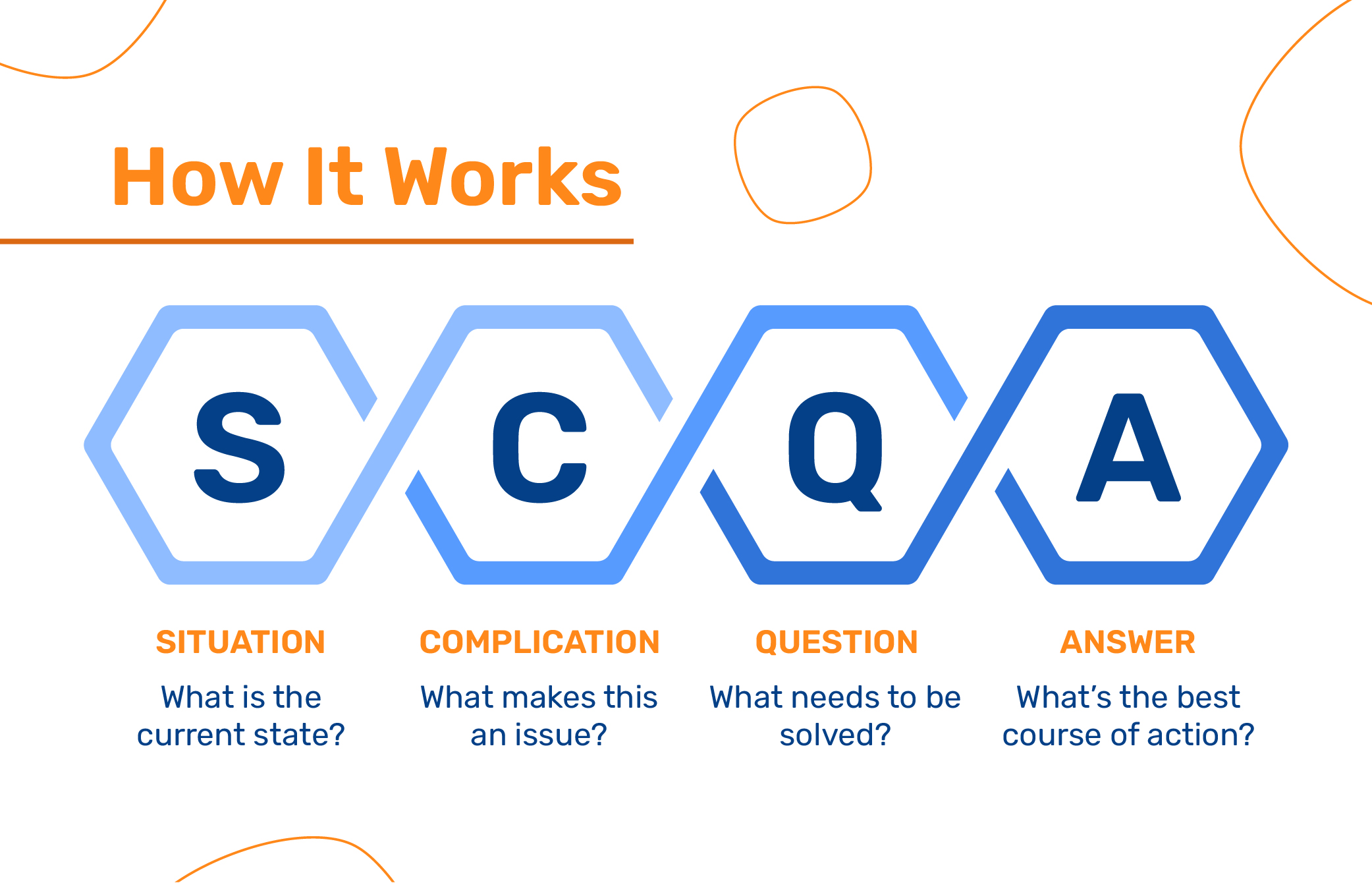
Example: Addressing Low Engagement in Employee Training
- Situation: Engagement in training programs has dropped by 20% this year.
- Complication: Employees find the content irrelevant and time-consuming.
- Question: How can training be made more engaging without increasing costs?
- Answer: Introduce role-based learning paths, microlearning formats, and real-time feedback mechanisms.
How You Can Implement It Right Now:
- Use this structure in team discussions to clarify issues before proposing solutions.
- Apply it when writing problem statements for projects or strategic initiatives.
- Use it in presentations and reports to clearly communicate challenges and solutions.
Once a problem is well-defined, the next step is to ensure the solution isn’t constrained by outdated assumptions.
2. First Principles Thinking: Solve Problems at Their Core
Many decisions are based on past experiences or industry norms. However, these assumptions can sometimes limit the effectiveness of a solution. First Principles Thinking helps deconstruct problems to their fundamental truths and rebuild solutions from the ground up.
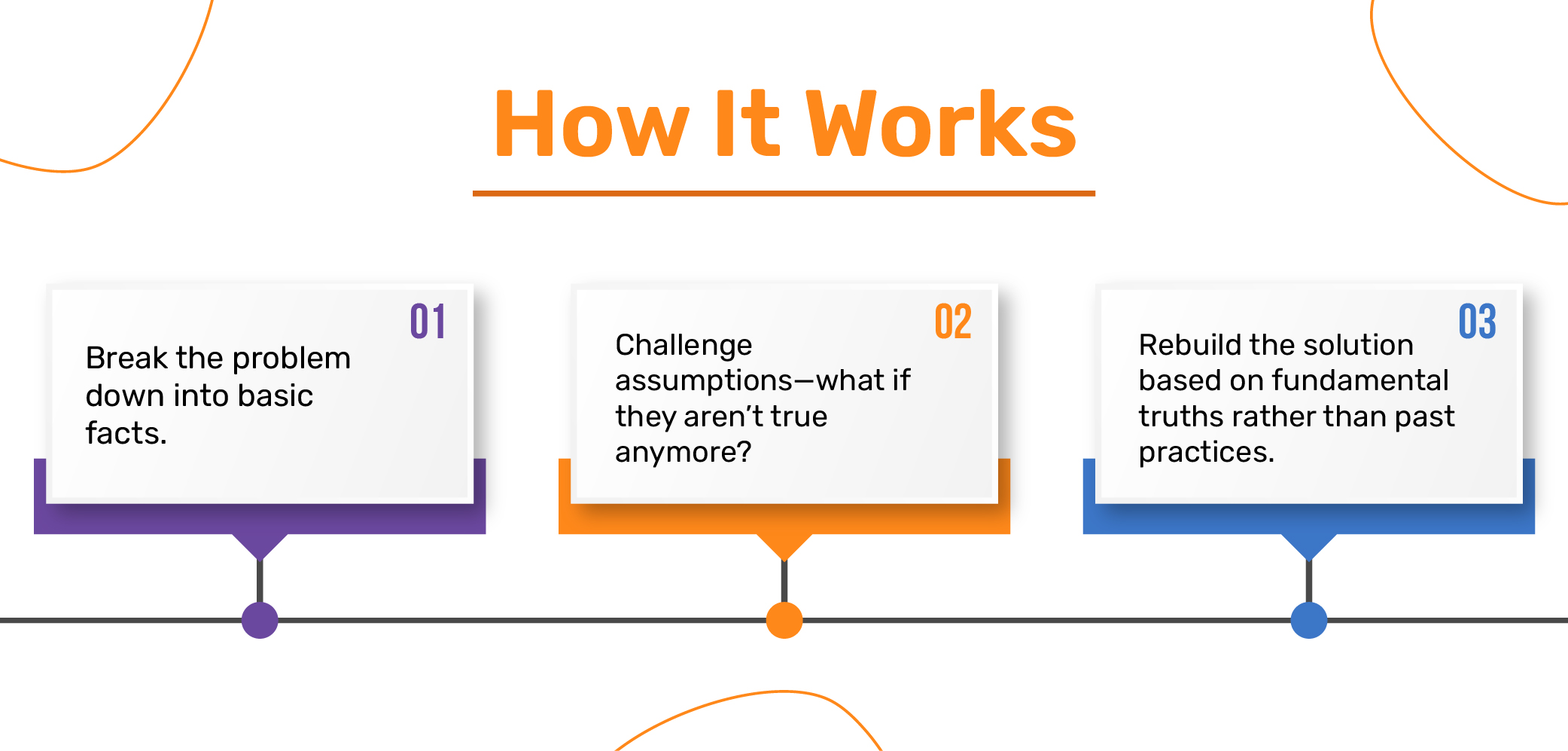
Example: Retaining Top Talent Without Raising Salaries
- Traditional Thinking: Employees leave because competitors offer higher salaries.
- First Principles Approach:
- Fact: Employees also value career growth, flexibility, and meaningful work.
- Assumption to Challenge: Higher pay is the only retention tool.
- New Solution: Build individualized career growth plans, training opportunities, and flexible work arrangements instead of relying solely on financial incentives.
How You Can Implement It Right Now:
- Use this framework when reviewing outdated processes or developing new strategies.
- Encourage teams to ask “why” multiple times before accepting assumptions.
- Apply it when brainstorming breakthrough solutions to persistent challenges.
Breaking problems down is essential, but leaders also need a way to prioritize which issues require immediate attention.
3. Eisenhower Matrix: Focus on What Truly Matters
With so many tasks competing for your attention, it’s easy to get caught up in what feels urgent while overlooking important strategic priorities. The Eisenhower Matrix helps distinguish between the two, ensuring your efforts go where they matter most.
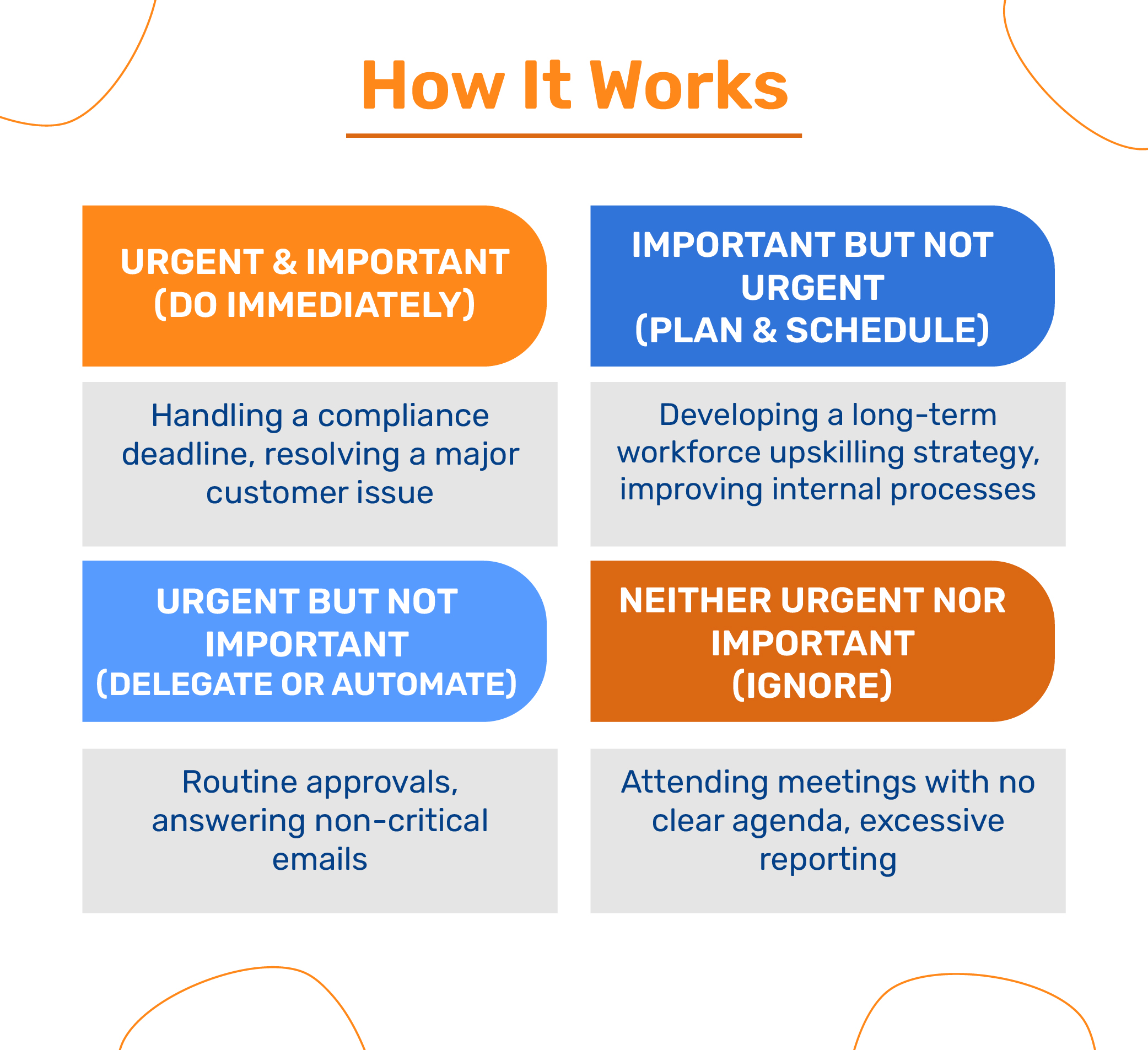
Example: Managing Priorities Effectively
- Urgent & Important: Resolving a critical compliance violation that risks legal penalties.
- Important but Not Urgent: Developing a structured employee training program to improve long-term workforce skills.
- Urgent but Not Important: Manually tracking employee training progress (which could be automated with an LMS).
- Neither Urgent Nor Important: Attending unnecessary meetings that don’t contribute to learning and development goals.
How You Can Implement It Right Now:
- Categorize tasks at the start of each week to focus on high-impact work.
- Automate or delegate low-value tasks to free up time for strategic decision-making.
- Use this matrix in meetings to ensure discussions prioritize important matters.
Prioritization is key, but to solve problems effectively, leaders need to uncover their root causes.
4. The 5 Whys Method: Identify the Real Cause of Problems
Many solutions only treat symptoms rather than fixing the actual cause. The 5 Whys Method forces teams to dig deeper by asking “Why?” multiple times to uncover the true reason behind a problem.
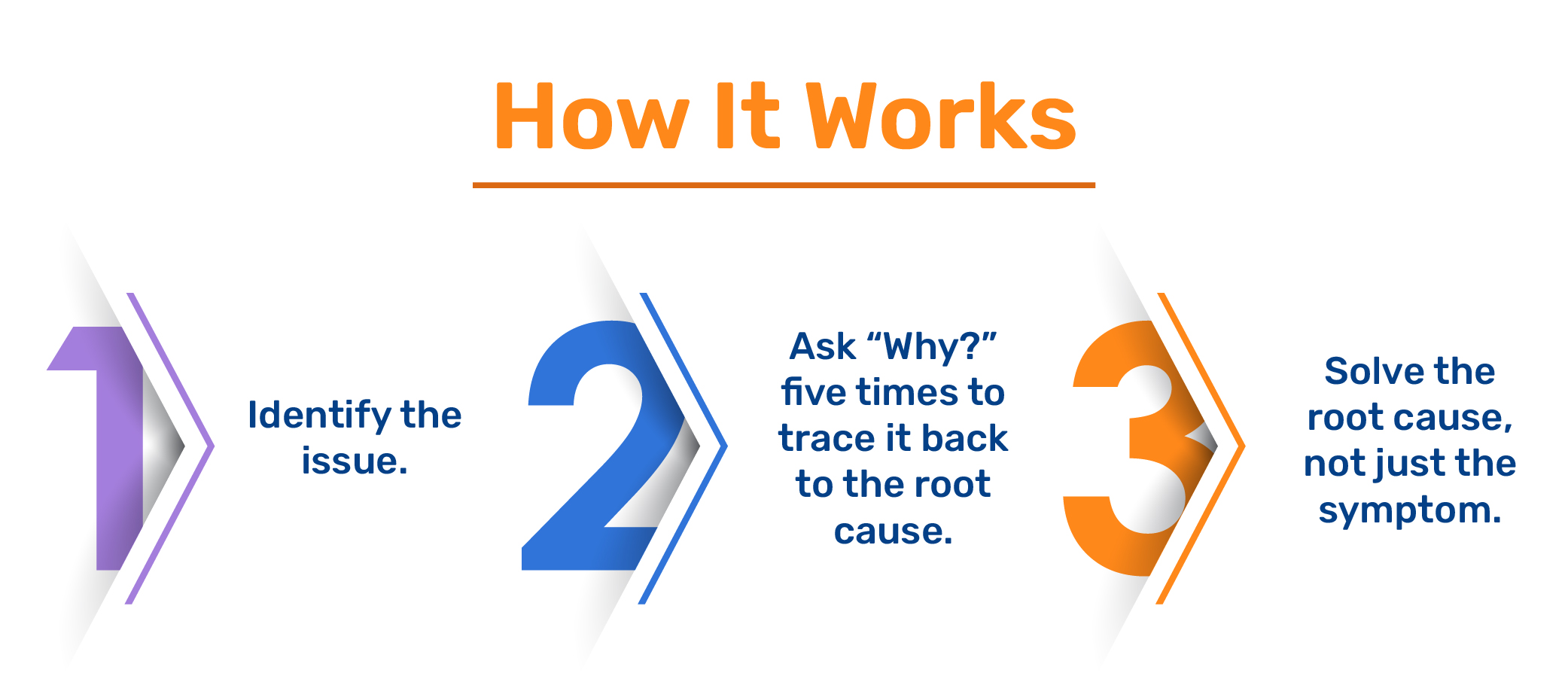
Example: Low Adoption of New Software
- Why aren’t employees using the new system? It’s too complicated.
- Why is it complicated? The interface is confusing.
- Why is the interface confusing? Employees weren’t involved in the design process.
- Why weren’t they involved? There was no structured user feedback loop.
- Why wasn’t feedback collected? No ownership was assigned to monitor adoption.
Root Cause: The issue isn’t resistance to change. It’s the absence of user-centered design and a structured feedback process.
How You Can Implement It Right Now:
- Use this method in team problem-solving sessions.
- Apply it when diagnosing why projects or initiatives aren’t delivering expected results.
- Incorporate it into performance reviews to address deep-seated issues rather than surface-level concerns.
Identifying the root cause is essential. In some cases, the most effective solutions already exist in a different industry and can be adapted to your context.
5. The TRIZ Method: Borrow Solutions from Other Industries
Many breakthrough solutions come from applying ideas that have already worked in different contexts. The TRIZ method (Theory of Inventive Problem Solving) provides a structured approach to problem-solving by identifying and adapting universal innovation principles.
Developed by Genrich Altshuller, a Soviet engineer, TRIZ is based on analyzing millions of patents to uncover recurring problem-solving strategies. Instead of trial and error, it helps organizations apply systematic innovation principles to improve processes, technology, and training.
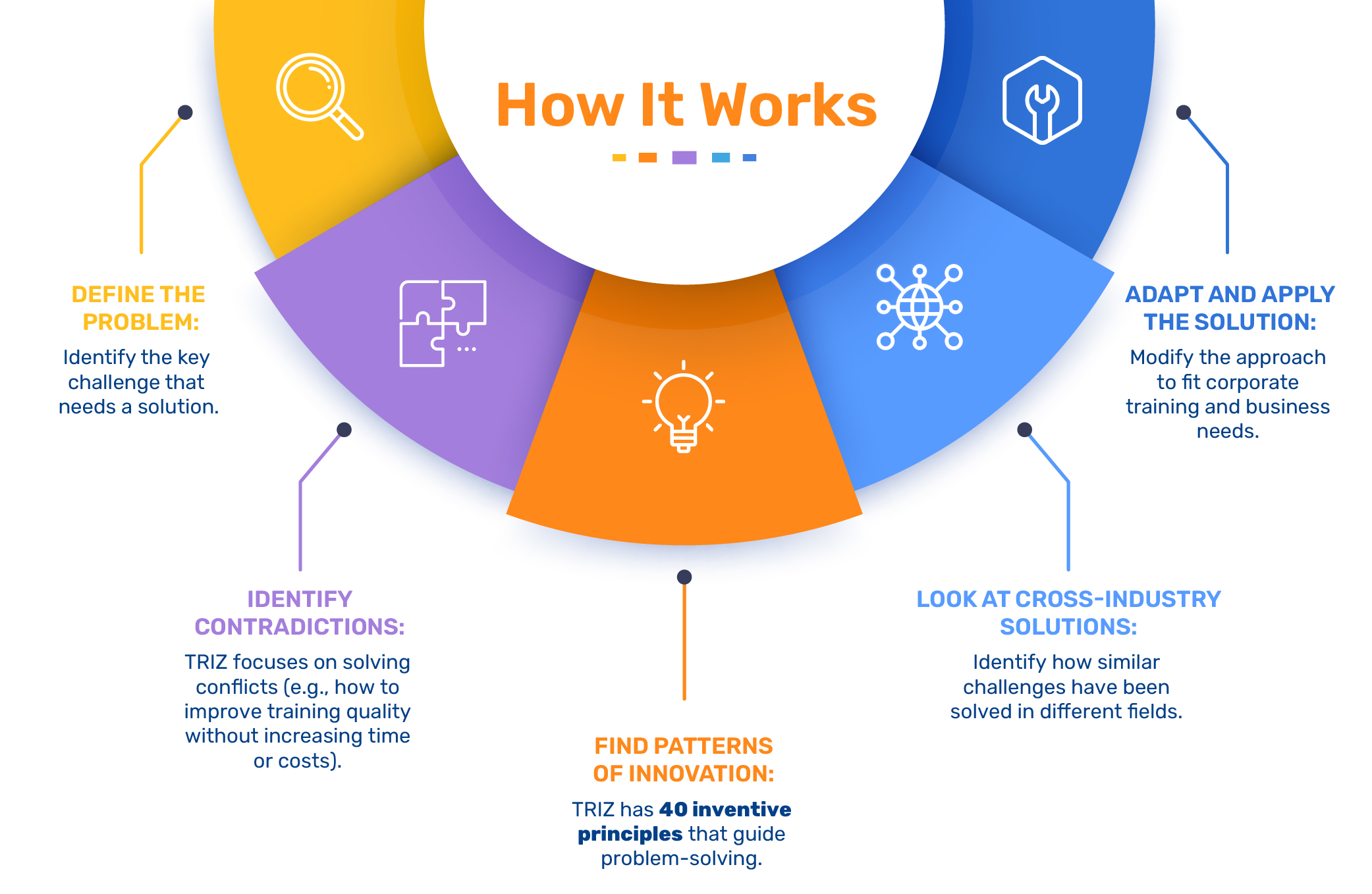
Example: Implementing an LMS to Streamline Employee Onboarding
- Problem: New hires struggle with scattered training materials and inconsistent onboarding, leading to slower productivity.
- TRIZ Principle: Use Self-Service & Automation. Many industries, such as customer service, have optimized onboarding with AI-driven self-service solutions.
- Solution: Implement an LMS that centralizes onboarding, provides structured learning paths, and uses AI-powered recommendations to personalize the experience.
How You Can Implement It Right Now:
- Regularly study innovations in other industries for inspiration.
- Use TRIZ in strategy workshops to challenge conventional thinking.
- Apply it when designing new workflows, technology rollouts, or customer experiences.
Strengthen Your Team’s Problem-Solving Skills
Effective problem-solving means making clear, confident decisions that lead to real results. Whether you’re addressing workplace challenges, improving team collaboration, or driving innovation, these frameworks offer a structured way to approach problems and solve them efficiently.
At KnowledgeCity, our Learning Library offers a wide range of problem-solving courses designed to help professionals sharpen their critical thinking and decision-making skills. Whether you’re a startup or a large enterprise, we provide training solutions that empower your team to solve challenges effectively and drive long-term success.
Book a demo today to explore how our training solutions can elevate your team’s problem-solving skills and drive lasting success.
Subscribe to Our Newsletter
Join 80,000+ Fellow HR Professionals. Get expert recruiting and training tips straight
to your inbox, and become a better HR manager.

 KnowledgeCity
KnowledgeCity 













